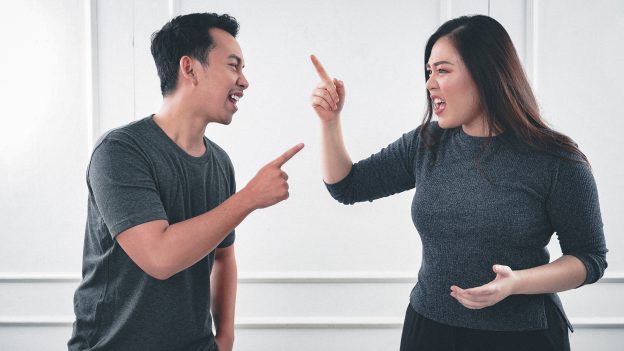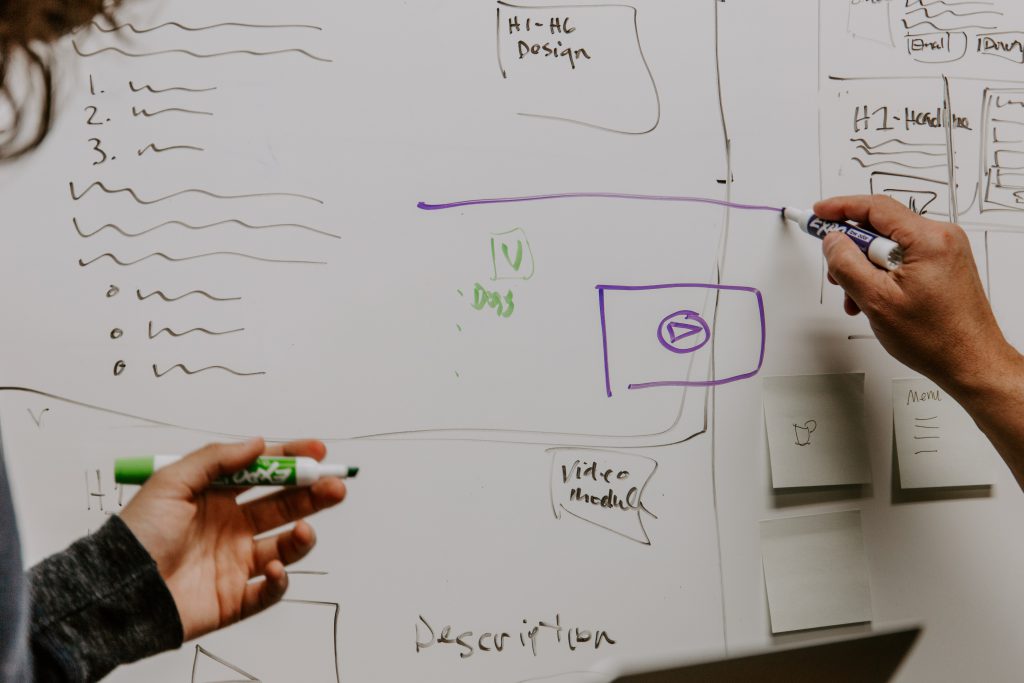
Why cooperation is sometimes so difficult and yet can increase learning success
Have you also experienced that learning in a group is sometimes easy and fun and sometimes feels like an uphill struggle with no satisfying outcome?
This blog post explores the conditions that make collaborative learning work well at times and create frustration at others. Where is the turning point when learners are motivated to participate despite initial resistance because they realise that they can take away more from this kind of learning than from a full-frontal lecture?
The current #dimi is about what collaborative learning is and how it can contribute to the development of competences. The next #dimi will then take a closer look at the conditions that make collaborative learning difficult or easier.
Collaborative learning always takes place when learners are given the opportunity to complete smaller or larger learning tasks in a group. The aim is to develop their own approaches to solutions, to work out specific knowledge and to transfer this to practical examples of application. This refers to all forms of group work, which can range from small work assignments in a seminar to comprehensive practical projects within the framework of a course.
Completing learning assignments in a group is usually more time-consuming than learning on one’s own. This is one reason why collaborative learning does not automatically meet with a positive response from learners. The individual’s motivation to cooperate is strongly influenced by the experience of the group: Do I feel recognised in the group with my experiences and as a human being, do I dare to express my opinions and needs and do I experience the cooperation as productive?
Learning in a group is not necessarily more successful or popular than learning in an individual setting. On the contrary, especially when learning assignments are linked to outcomes that may also be assessed, many learners prefer to work on the learning assignment alone. Arguments for this are that individual tasks can be completed more efficiently and independently and can be designed according to one’s own standards.
Why does collaborative learning still make sense?
Learning is an active process, i.e. learning is particularly productive and sustainable when learners become active themselves. I already expressed this basic statement in #dimi_03 and supported it with examples in many #dimi contributions.
In order to increase the learners‘ activity, different forms of collaborative learning can be employed. These should drive the learners‘ active engagement with the respective field of knowledge and get them to think, structure and find solutions. However, collaborative learning is not only about the outcome, but also about the path towards the learning outcome – i.e. the learning process.
Learning is not what is achieved in the end, but the entire process of acquiring knowledge. This benefits significantly from social interaction, as different areas of the brain are stimulated, which contributes to the fact that new knowledge can be better anchored and remembered. This means, for example, discussions that are held on the content level, but also involve many social interactions and thus also emotions. There are opportunities to contribute one’s own experiences, i.e. to reproduce them and to analyse them together with others and to relate them to the newly developed topics. In the process, arguments for or against a solution approach are developed together. All these discussions activate the brain, make it receptive and ensure that the knowledge is processed sustainably. The trainer’s role is always a restrained one, because the learners themselves should be given the opportunity to try out scenarios and find out which factors lead to which results.
In addition to dealing with the task, collaborative learning also includes all processes that go beyond the content level in the learning process. Numerous competences are fostered. For example, the group and each individual learns at each step where the group organises itself, distributes tasks, makes decisions, searches for information and tries to find out how to use specific knowledge to solve the task at hand. All these steps are part of the learning process. Making decisions oneself promotes the anchoring of knowledge and the development of competencies, without which knowledge remains an empty shell. Collaborative learning therefore embraces the claim that learning is not only about the immediate „output“ but about the broader and longer-term learning outcome.
How does a collaborative learning culture emerge?
Collaborative learning operates on the premise that learning is stimulated by doing things together. The central question here is how cooperation and collaboration can succeed in a learning group. Collaboration expands the concept of cooperation. Cooperation can be translated as working together, while collaboration means interacting. The point is that collaboration produces a learning outcome that is only possible through the interaction of the group and creates an added value that cannot be achieved with individual work. More on this in the next #dimi.
A learning culture built on the principle of collaboration does not develop within the framework of a single group work. Collaboration only becomes a learning principle when the conditions for it are created consciously and in the long term and reflection and feedback become a fixed part of the learning process. Especially in courses, which are an essential part of trade union education work, collaborative learning can be established as an attitude and thereby create a sustainable learning process. It is as much the responsibility of the course leaders as it is of the trainers to create and develop a framework for collaborative learning.
Collaborative learning aims to see knowledge and competences as closely intertwined and to design learning processes in such a way that knowledge acquisition leads to competence. The aim of learning is therefore the acquisition of a comprehensive competence to act, which includes professional, social and personal competences. This claim is particularly comprehensible in trade union education work: What use is it to shop stewards if they acquire a good basic knowledge of labour law but have poor counselling or communication skills? Competence to act is always developed in a double pack. Collaborative learning assumes that these comprehensive competences can be developed particularly well in the form of action-oriented work assignments that come close to scenarios from everyday life.
What competences are developed through collaborative learning?
In any collaborative learning arrangement, learners have the opportunity to develop their social competences and practice solidarity. They can take on different roles and expand their behavioural repertoire. Some experience in the group the opportunity to practise expressing their opinion. Others learn to hold back more so that everyone can participate in a participatory way. Learners practise their ability to present and explain or justify an issue to others. They make decisions by evaluating contexts and situations and learn to organise themselves.
In short, they develop their communicative, social and personal competences and deepen their professional and methodological skills, which are central to their role as shop stewards, trade union officers, etc. Although collaborative learning is promising in itself, we know that a lot of thought and a clear understanding of the trainer’s role is needed to create a constructive framework for it. I have already described some important points concerning collaborative learning in #dimi_14, which was about group work. The #dimi_ 08 also deals with social learning spaces and describes what individuals in the group need to be able to work well together.
In the upcoming #dimi_18 blog post, you will learn about the challenges that often arise in collaborative learning, e.g. that not all learners participate equally in the learning process and that collaboration suffers from this imbalance. You will also learn what you as a trainer can do to create a collaborative learning culture, e.g. so that the group gets to work well and uses conflict as a learning opportunity instead of sweeping it under the carpet.
For further reading:
- – Widulle, Wolfgang (2009): Handlungsorientiert Lernen im Studium. ArbWidulle, Wolfgang (2009): Action-oriented Learning during Academic Studies. Workbook for social and educational professions. 1st ed. Wiesbaden: VS, Verl. für Sozialwiss (OnlinePlus).
- Cooperative Learning
- Do we learn better together with others?
- Methodpool Uni Cologne
Genannte (und auch andere) Bücher können HIER im Webshop des ÖGB-Verlags versandkostenfrei bestellt werden.
Author: Margret Steixner
Translation: Astrid Donaubauer

Dieses Werk ist lizenziert unter einer Creative Commons Namensnennung-NichtKommerziell-Weitergabe unter gleichen Bedingungen unter gleichen Bedingungen 3.0 Österreich Lizenz.
Volltext der Lizenz






